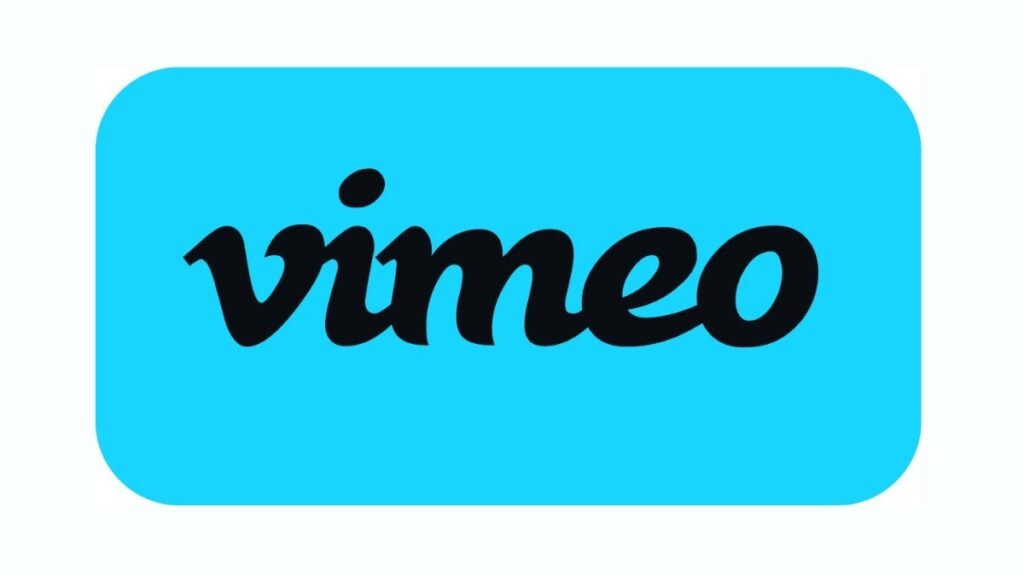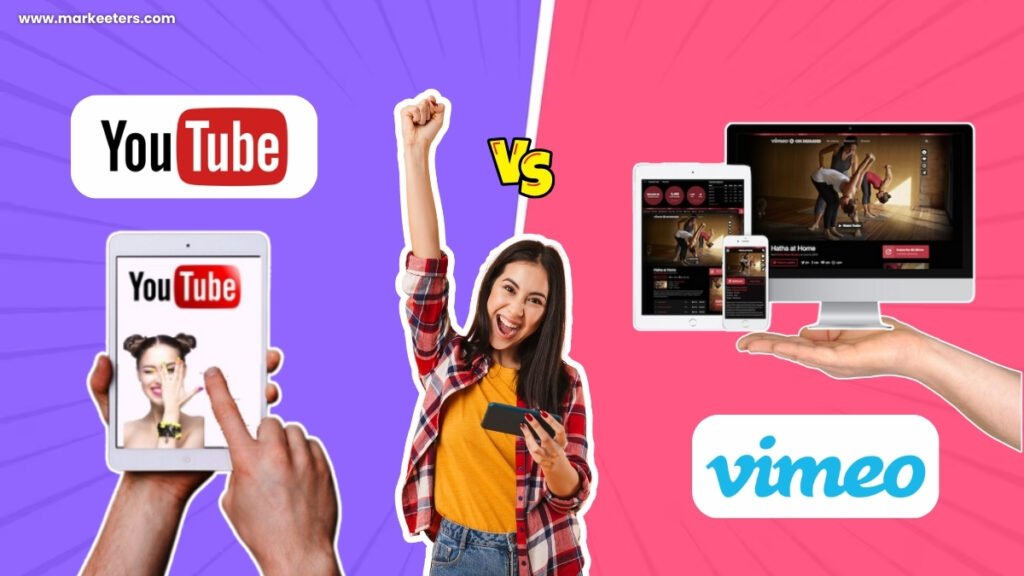YouTube or Vimeo? Learn which video sharing site suits you best. YouTube vs Vimeo – Video Sharing Sites Compared. Make an informed choice today!
Most likely, the first platform that springs to mind when sharing your video with the world is YouTube. However, there are other creators who are avid supporters of Vimeo. And if you are a dedicated maker of videos hoping to establish your brand online and eventually make money off of it, Vimeo or YouTube should be your first choice.
You will need to consider a lot of facts before deciding on the best platform for your content. The bright side is that we have got you covered!
What is YouTube?

YouTube is a free video sharing platform where web videos can be easily seen. You can even make and post your own movies and share them with others. YouTube is one of the most visited websites on the internet since its creation in 2005. One factor contributing to YouTube’s popularity is the vast quantity of videos available on the platform. There is always something fresh and unique to watch. You will find a vast array of videos, including ones with cute pets, oddball food demonstrations, humorous scientific courses, fast fashion advice, and much more.
User-generated content is also a major factor in its popularity. You will find incredible and imaginative movies created by individuals. Additionally, you can film and publish your own videos on YouTube and interact with the community.
Read more:
What is Vimeo?
Vimeo is a platform for sharing videos that offers features like personalization and live streaming. Instead of running advertisements, the platform offers software-as-a service (SaaS) and subscription options for companies and content producers. These services cover the production of videos, editing tools for broadcasting, and client communication. In the end, Vimeo enables you to produce expert, high-caliber videos that can be viewed by people all around the world.

The website gives preference to high-resolution videos and does not accept any other kind of video. For a video to be approved, it must adhere to Vimeo’s requirements for both format and content. This has made it possible for the site’s content to develop over the years in a distinct direction. Unlike YouTube, Vimeo does not allow the sharing of debate or conversation content, politics, everyday events, or daily news.
YouTube vs Vimeo: A Quick Review
| Features | YouTube | Vimeo |
|---|---|---|
| Business Model | Ad-supported, premium subscriptions | Subscription-based, transactional VOD |
| Content Quality | Emphasis on user-generated content | Focus on high-quality, curated content |
| Monetization | Ad revenue sharing, memberships, merchandise | Revenue sharing, Vimeo on Demand sales |
| Upload limits | Unlimited for verified accounts | Depends on account type, with limits |
| Video Resolution | Supports up to 8K resolution | Supports up to 8K resolution |
| Audience Reach | Wider audience due to brand recognition | More niche, targeted audience |
| Customization | Limited customization options for channels | Extensive customization for player and pages |
| Analytics | Comprehensive analytics tools for creators | Detailed analytics available for creators |
| Community | Large community with active engagement | Smaller, tightly-knit community |
| Copyright Control | Robust Content ID system for copyright | Limited copyright protection mechanism |
| Live Streaming | Extensive live streaming capabilities | Live streaming available for premium users |
| Branding | Strong emphasis on individual creators | More corporate and professional atmosphere |
Explore:
YouTube vs Vimeo: A Detailed Review
YouTube vs Vimeo: Audience and Reach
| YouTube | Vimeo |
|---|---|
| YouTube’s user count of 2.49 billion places it second on the list of most used social media platforms. YouTube has more visibility than Vimeo. It is owned by Google. Also, YouTube is pre-installed on practically every Android phone in existence. The platform enables you to add end screens and cards to your videos to promote other videos, suggests content to viewers based on their watch history or interests, and even includes tools like surveys and live chats to further expand reach. | Vimeo has 200 million users. Over 287 million creatives, company owners, and entrepreneurs trust the site, which is expanding rapidly. There are more options available on Vimeo that might expand the audience for your channel. Its search function, for instance, enables users to look for videos, individuals, channels, and groups. Moreover, it contains a function called content discovery that displays related videos in the sidebar. Vimeo allows users to form and be members of groups with its Groups feature. Users have the option to restrict group content to be seen by its members exclusively. Additionally, the portal features hand-picked content that has been chosen by Vimeo personnel on its homepage. |
YouTube vs Vimeo: Video Editing
| YouTube | Vimeo |
|---|---|
| You can make videos using previously posted videos, images, titles, and more with YouTube’s robust video editing tools. Moreover, you can create movies from your Google Photos images and videos. With the help of their web-based video editing tools, you can quickly and simply create films by trimming or cropping any unneeded material, adding audio effects, adding text and overlays, using transition effects, and more. You can leave a comment, caption, subtitle, and link your videos on YouTube. Additionally, it has a live streaming option that lets you broadcast news, events, or just informal vlogs in real time. | Vimeo does not provide as many options for video editing. It does, however, include all the necessities. Titles, descriptions, categories, tags, licenses, and audience ratings can all be added to videos. You have the option to add subtitles and captions to your videos. Nevertheless, Vimeo lacks annotation capabilities, so you are unable to include clickable links in your videos. Additional editing tools offered by Vimeo include text overlays, transition effects, screen cards, audio effects, curve editing, unique watermarks, color correction and grading, and video cutting and cropping. |
YouTube vs Vimeo: Monetization
| YouTube | Vimeo |
|---|---|
| YouTube partners with content creators that sign up for Google AdSense in order to monetize their videos. Then, the advertisements that appear on their videos are divided up among the creators. To join the program, you must first meet the following requirements: you must be at least 18 years old, have 4,000 watch hours during the previous 12 months, and have 1,000 followers on your YouTube channel. Content creators can employ additional revenue streams on YouTube. Publishers can, for instance, solicit donations, include sponsored reviews, join affiliate networks, sell goods in their films, and more. | Vimeo does not have an advertising program that you join to earn money; instead, they are proud to provide an ad-free video platform. They do, however, provide a function called “Vimeo on Demand” that lets you sell videos to customers directly. To participate in the program, you must have a Vimeo Pro account at least. Similarly, you can design and market membership packages that provide users access to premium features like first access to new movies, behind-the-scenes tours, and retail discounts. You can also hold live events that people can pay to view, such as webinars, concerts, and seminars, using Vimeo. |
YouTube vs Vimeo: Privacy Controls
| YouTube | Vimeo |
|---|---|
| Three privacy options are available on YouTube for the videos you post to your channel: – Public: Anyone can view these videos in the public domain. They are searchable, enumerated, and visible on YouTube. – Unlisted: Those who possess the URL can view these videos. They won’t show up in related videos or searches on YouTube, though. – Private: Only you and the particular persons you designate can see these videos. In addition to these options, you can make comments and the like/dislike buttons on your videos inactive. Additionally, YouTube enables you to stop your videos from being embedded on other websites. Remember that you won’t be able to embed videos on your own WordPress website if you you choose this setting. | Vimeo outperforms YouTube in terms of privacy protections. You can use it to conceal your films on Vimeo and set them to private, public, or unlisted. This implies that although your film won’t have a Vimeo homepage, it may be integrated and viewed on your WordPress website. You can limit video embeds to your website only if you are on a subscription plan. You can also make your videos password-protected so that only individuals who know the password can see and share them. After that, you can include such movies in password-protected WordPress articles. Vimeo is far superior option if you want greater control over who may view your online videos. |
YouTube vs Vimeo: Pricing
| YouTube | Vimeo |
|---|---|
| YouTube offers a totally free subscription with limitless bandwidth and storage. This is so because YouTube’s primary source of revenue is the display of ads on the site. These ads may be shown throughout the YouTube app, sidebar, and video player. With the free plan, you, as a content creator, are able to upload an unlimited number of YouTube videos. On your channel, you can even do live YouTube broadcasts. It does have certain restrictions, though, such as not allowing you to submit movies longer than 15 minutes or to monetize them with ads. This limit is readily increased by confirming your account. To receive verification, you must have 100,000 subscribers or more. Monthly premium subscriptions begin at $13.99. | Vimeo earns money by providing video hosting services, which sets it apart from YouTube in terms of business strategy. This makes it possible for publishers and small companies to provide their customers with an ad-free viewing experience. You can utilize Vimeo’s free plan as well. However, the weekly storage is restricted to 500 MB, and you may only generate up to two videos every month. There are other plans offered by Vimeo, which are: – Starter: $20 per seat/month – Standard: $33 per seat/month – Advanced: $108 per seat/month |
Conclusion
Both YouTube and Vimeo are excellent, user-friendly platforms for hosting videos. They provide fantastic tools for editing videos, simplify the process of embedding videos on your website, and even provide several opportunities for earning money online.
YouTube will be more beneficial for your objectives if you are a small company owner or have recently launched a WordPress site and wish to use videos to expand your audience and gain subscribers. However, you will require additional privacy and an excellent viewing experience if you run a membership-based website, offer courses, or conduct webinars or live events. At that point, Vimeo is a preferable option.
FAQs
Why does Vimeo look better than YouTube?
Venmo can host and embed high-quality videos flawlessly. Professionals wishing to share their videos can be certain that they won’t be compressed, in contrast to the majority of YouTube content that is compressed for data and space.
Is YouTube and Vimeo better for SEO?
Vimeo is a great place to start uploading your content if you are searching for a creative community where you can interact with other videos artists and get some visibility in certain specialty. YouTube is your greatest option if your company’s objectives primarily include search engine optimization and advertising.





